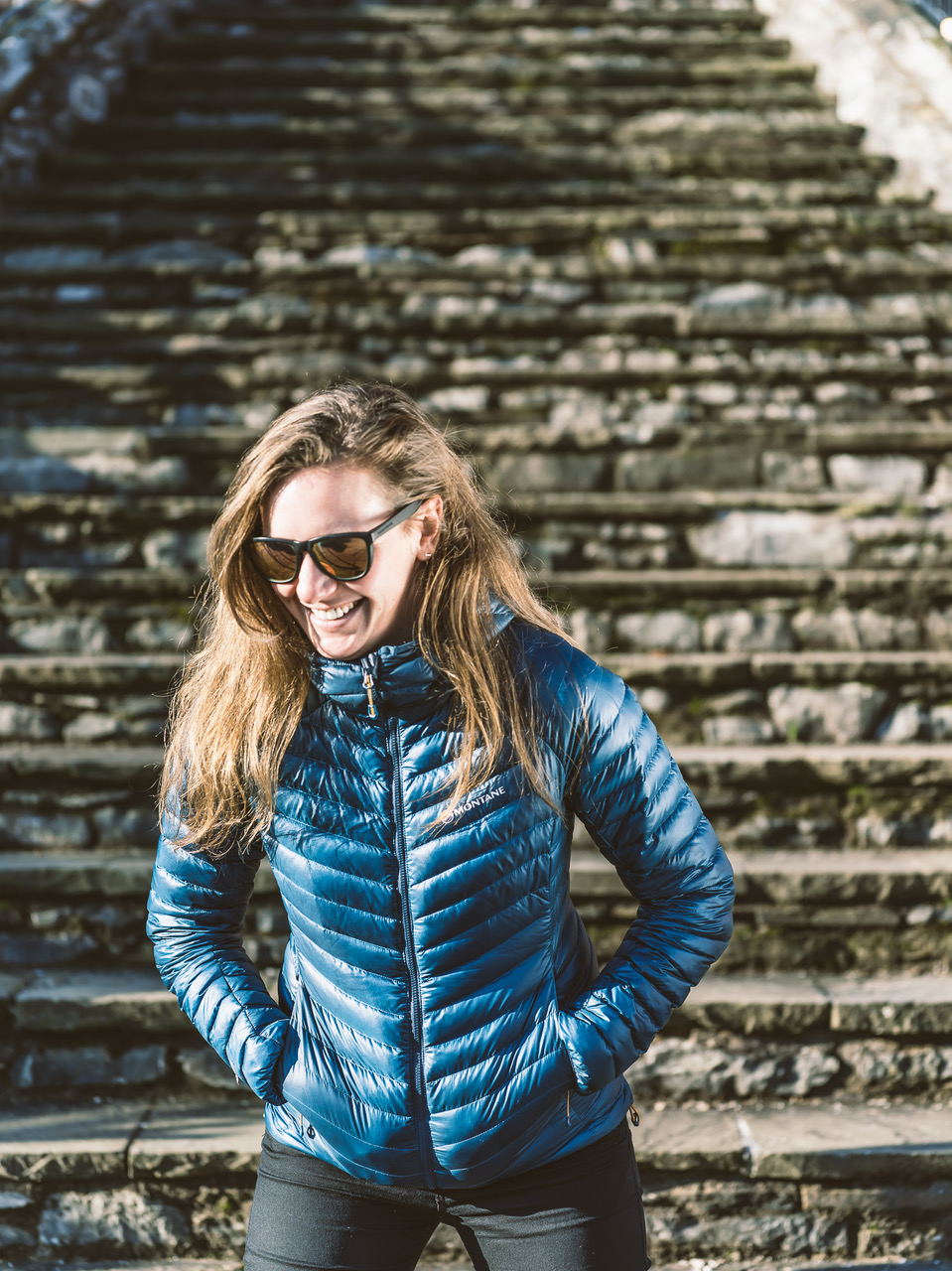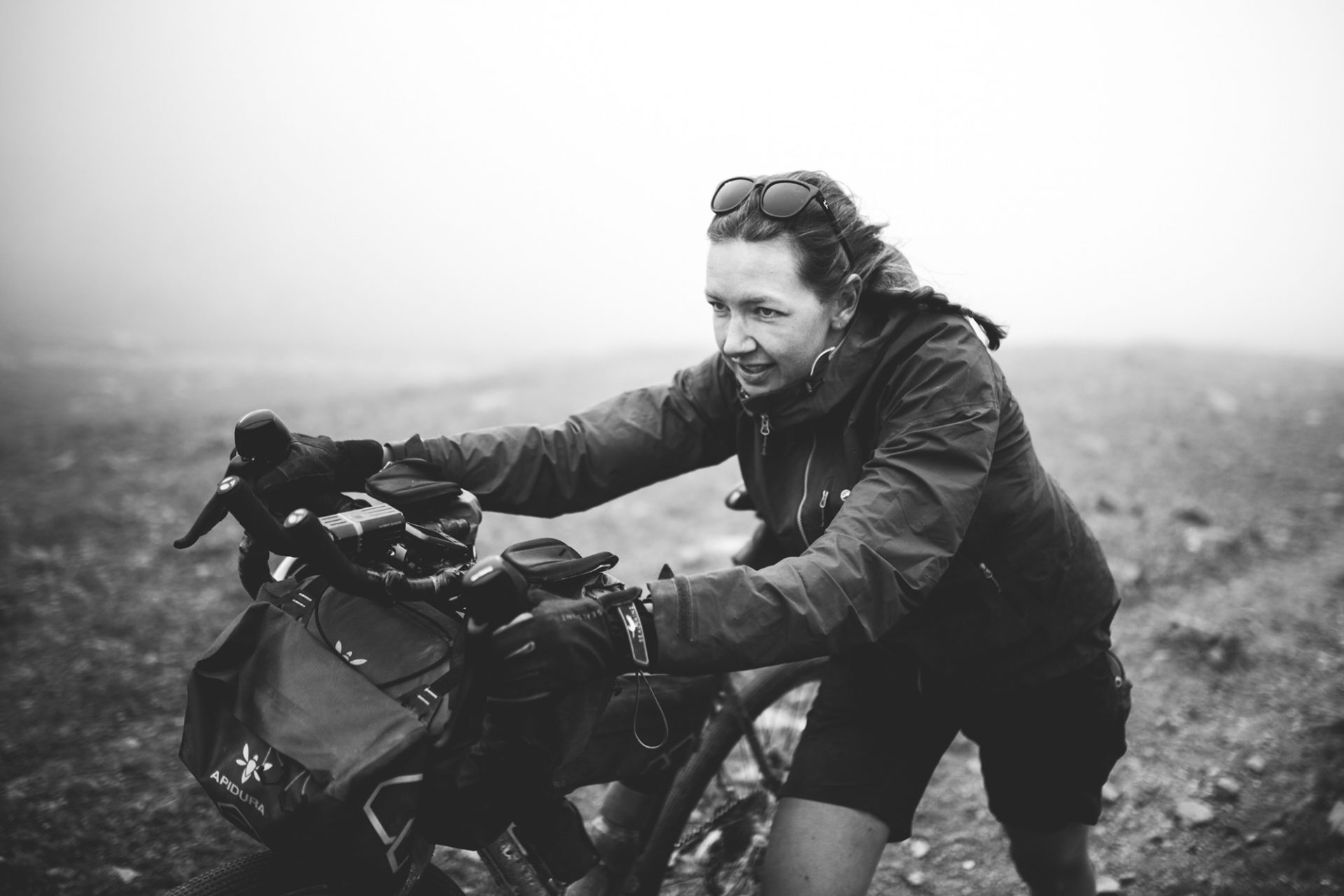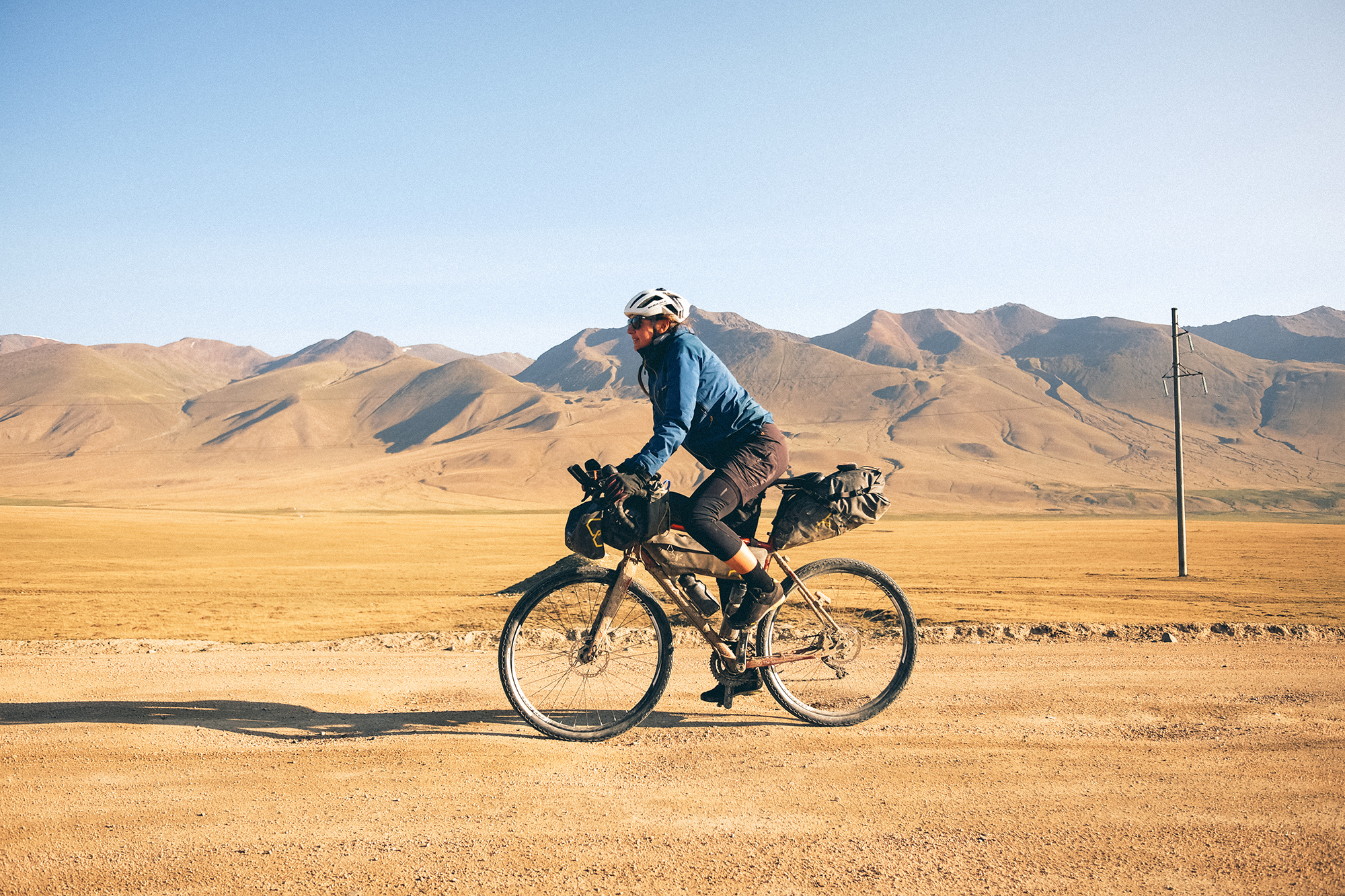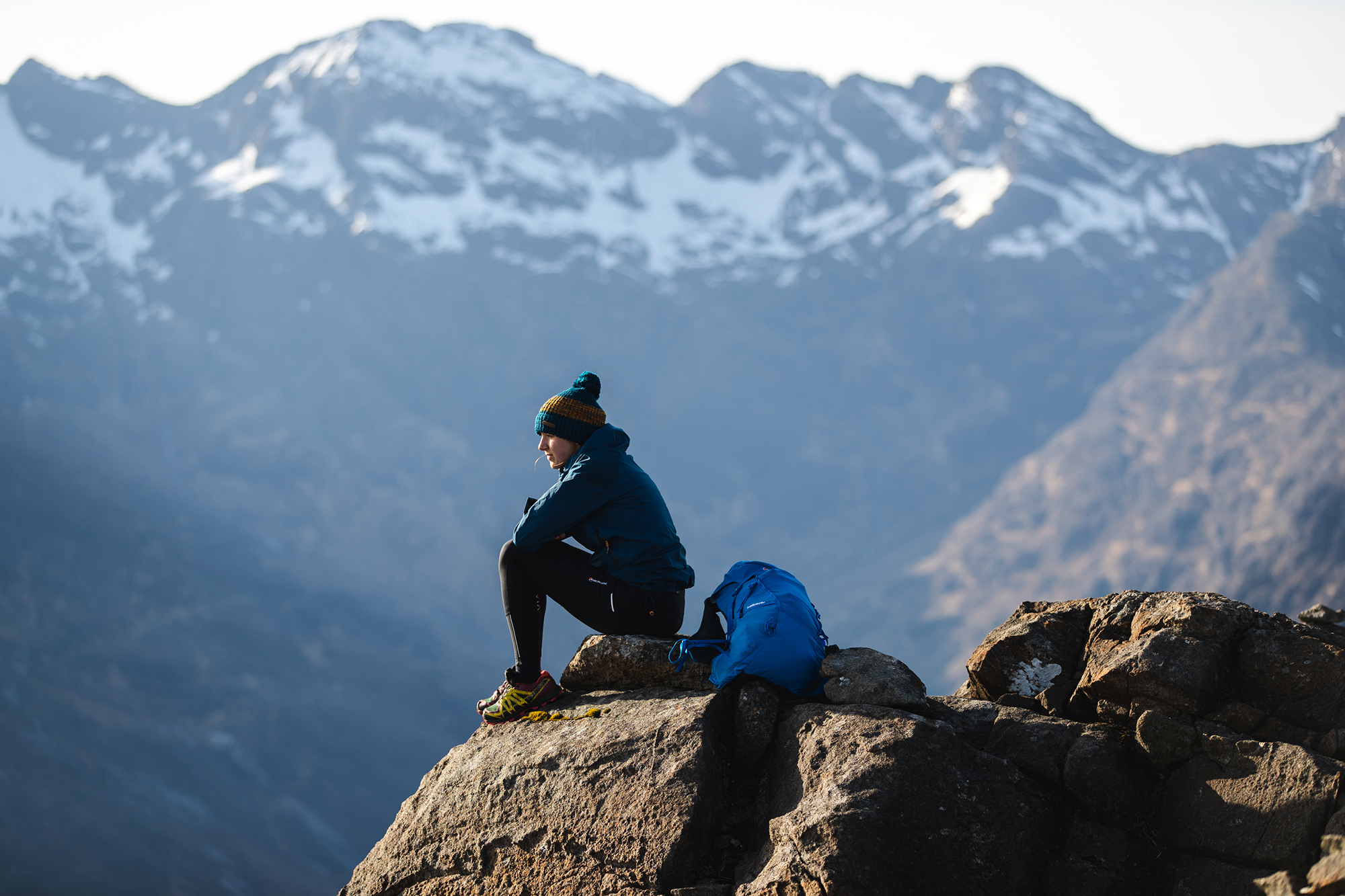Twenty years from now you will be more disappointed by the things that you didn’t do than by the ones you did do. So throw off the bowlines. Sail away from the safe harbour. Catch the trade winds in your sails. Explore. Dream. Discover. – Mark Twain
Jenny Tough is known for her challenging solo expeditions, she covered thousands of miles running some of the most epic mountain ranges in the world, and traveling by bike packing few of the toughest races and routes around the globe. In the last four years she has completed expeditions in places like the Andes Range in South America, High Atlas in Africa, Kyrgyzstan in Central Asia, or Southern Alps in Oceania. As you can see the list of adventures is very extensive and we mention just a few highlights. We find in Jenny’s lifestyle the pure essence of a natural born adventurer always challenging herself, her limits and her fears, and pushing herself into incredibles adventures and feats.
My passion is in human-powered endurance challenges, and exploring this beautiful planet, but particularly in mountains. Through my adventures I am always pushing my limits and finding them, and I enjoy sharing my stories and encouraging others to explore their own limits, love the natural world, and protect our wild places.
Growing up in the Canadian Rockies Jenny feels a deep connection and respect for nature, mountains and wild environments, and she often portrays her solo adventures with videos that transmit all the toughness of her expeditions but most of all the deep symbiosis between her and the mountain habitat.
Nature has always been my church. Growing up by the Rocky Mountains, I was lucky to spend a lot of time in pristine wilderness and I developed a very deep connection with it. Time in the outdoors is essential to my overall well-being!
Physical and mental strength
Endurance sport is a practice that needs rigorous physical training but it is a fact that when the physical capacities are pushed to the limit, the mental attitude is essential and makes the difference. It looks like Jenny has a privileged relationship with this factor.
I hit my limits all the time. The thing is that your limit is a fluid line, and every time you hit that line, you push it back a little further.
When did you discover that you had an attitude for endurance sport?
I started running when I was a teenager, but it wasn’t a very positive start. I did it to burn calories and I basically hated my body. But, eventually over time I found that enjoyment started creeping in and my runs became longer and I worked my way up to finishing a marathon when I was 20. The self esteem I gained from that really changed the course of my future!
From there I was hooked, and started exploring the concept of combining my love for endurance challenges with my other passion, adventure travel.
One of the characteristics of Jenny is the predilection for the solo adventure, which for some could be seen as an obstacle, but for others is the best way to challenge themselves. When unpleasant situations appear, and they always appear in many ways, resilience, the ability to solve problems, and managing nerves and anxiety are probably the best allies. We are thrilled on Jenny’s capabilities for making difficult things look so easy
What I really love about going solo is how much I learn about myself when I challenge myself. I’ve discovered that I’m much tougher than I ever thought I was. Every time I go on a big challenge, I really surprise myself with what I’m capable of.
I do take a lot of risks and I’m comfortable with that. The thing is being aware of what the dangers are, and doing everything in my power to mitigate them.
Go for it! That’s the most important part. Don’t compare yourself to others, but instead compare yourself to only yourself. I’m always aiming to be better than I used to be, but I always know there are plenty of people out there who can go much further and faster. That doesn’t matter – what matters is that I’m always pushing myself to be my best.
Jenny represents a great example of overcoming, a woman that doesn’t fear to challenge herself and her limits, a person that inspires a lot of people through her lifestyle. Despite all the progress of gender equality, there is still a lot to do to achieve equal opportunities between women and men. So we asked her about women in endurance sports.
We know that in other sports, men and women can’t compete equally, but in endurance things level out for some reason. I think once we see 50/50 participants, we’ll see a lot more women coming in the top standings.
“You can’t be it if you can’t see it”. By showing women in endurance sports in the media, more women will be encouraged to sign up.
Cycling and the Silk Road Mountain Race
Jenny has also challenged herself with some of the most hard long distance cycling races, among others, the Silk Road Mountain Race (SRMR) in the high altitude of Kyrgyzstan, the Transatlantic Way Race on the coastline of Ireland, the Atlas Mountain Race, or Trans Scotland, as well as some bike packing in the Balkans.
Especially in the SRMR she lived and learned a lot about suffering and struggle but also about joy, self overcoming, happiness on a bike, dealing with high altitudes, dogs, storms, extreme hard gravel, extreme temperatures, lack of sleep, dehydration and rare resupplying locations.
In the following text we included Jenny’s SRMR narration of the sixth day, a deep and clear write up that describes very well the extreme and unpredictable conditions she faced during the race and how she overcame those obstacles. It’s a fact that in this kind of race there is no place to take foolish and unnecessary risks. The aim is to finish, and finish safe. The rest is a story that every rider marks on his skin, km after km, with no easy sections every situation is unknown and potentially dangerous.
It requires an all-round adventurer, not just pure cycling – which worked well for me, because my off-road cycling is fairly weak!
Physically, you have to take care of yourself to manage the distance. Being out there, exposed to brutal elements and altitude, for up to 2 weeks, can take its toll. Mentally, you just need to find a way to cope with the scale of the challenge and the difficulties it brings. For me personally, I really love Kyrgyzstan and those mountains are incredible, so I found a lot to enjoy.
Sixth DAY
My alarm goes off at 4 am, my new standard. Groan. I’ve been feeling sick all night, not sure if the culprit is the dodgy water I took (filtered, treated, and boiled for good measure, but nonetheless gross) on the extremely dehydrated road along the Chinese border, or the awful tasting (potentially expired) overpriced boil-in-the-bag camp food I force-fed myself for dinner last night. All I know is that this morning, I feel terrible, and I will continue to feel terrible because I am completely out of water – what little dribble of clean water I saved in my bottle from yesterday is now frozen, as is everything I left out last night, including my shoes.
I don’t want to move, but I know I won’t feel any better until I find water. I had tried my hardest last night to keep moving until I found a water source, but eventually gave up as the washboard (yes, more) got the better of my attitude and I felt it was best to stop before I got too pissed off and made some bad choices. I shuffle my way out of the drain pipe I bivvied in last night and begin packing up. I have to slam my feet at my frozen-solid shoes, and accept that it might be a while before I’m able to tie my shoe laces – they may as well be concrete for how frozen they are. I make a mental note to start leaving my shoes in more accessible form if they’re going to freeze solid during the night so that it will be easier to get them on in the mornings (this turns out to be an important habit in the second half of the race). I crawl out of the ditch (yes, really) and back onto the washboard road to nowhere.
The stars are breathtakingly beautiful, but it’s far below freezing at 3500m altitude at this hour. I’m still feeling wretched, and that, combined with the frigid temperature (my computer claiming -8C), is making riding very difficult. I can’t feel my feet nor hands, and every bump in the loose gravel track is making me more nauseated.
“Fix your own problems” I mumble out-loud to myself. It’s become a bit of a race mantra – if things are going tits up, nothing out here will save you (that’s also the rules of the race). You are, effectively, alone in the wilderness. Any complaints must be dealt with by you and you alone, and preferably swiftly before they worsen. So “fix your own problems” has become the cheery line that I’ve yelled at myself frequently throughout the race so far.
In this instance, fix-your-own-problems means finding a way to restore function to your hands. It’s so cold that I’m experiencing pain when I grab my brake levers, and I know that isn’t a good thing. Unfortunately, I’m already wearing everything I own, and I really can’t stop moving – I need to get some water. So, I undo my front roll bag and pull out my fluffy down sleeping bag, the welcoming cocoon that I begrudgingly hauled myself out of less than an hour ago, and wrap it around my shoulders so that I can grab the handlebars with both hands safely and snuggly tucked inside the sleeping bag. The effect is instant, but I’m reduced to walking. Every now and then I scooter with one foot on the pedal, but for the most part, I walk for nearly an hour until I hear the most beautiful sound in the world: the sound of moving water.
I step off the route and drag my bike through the loose gravel of the wider riverbed towards where the clear water is flowing. I can hardly believe my eyes (it’s still dark), but the water is, indeed, moving. Not a dodgy puddle. I’m saved.
My water filter is completely frozen and no use, so I get my stove set up quickly to boil a drink. While the stove is on, I set up my ground mat underneath me to keep myself warm. I curl up in my sleeping bag and watch the pot boil, falling asleep sitting upright three times during the process. After getting my first drink of water in far too long down my neck, I decide that my body is no use right now – to try and ride in my current state is just a poor use of my time. I’m better off getting a bit more rest and moving at a decent pace once the electrolytes I’ve just had do their magic, and the temperature warms up a bit. I set my alarm for 40 minutes and instantly fall asleep. 40 minutes later, I set the alarm for a further 40.
When the second alarm goes off, the sun is cooking me inside my bag. It’s an incredible sensation to feel the warmth seeping down to my bones. Slowly, I drag myself out of my bag. Let’s try this again, I mutter to myself, as I restart my usual morning routine of porridge and coffee while packing up my bags and preparing the bike to ride.
Photos by James Robertson, John Alexander, Johny Cook, Lucas Canino , Jeff Liu, Tom Hardie








